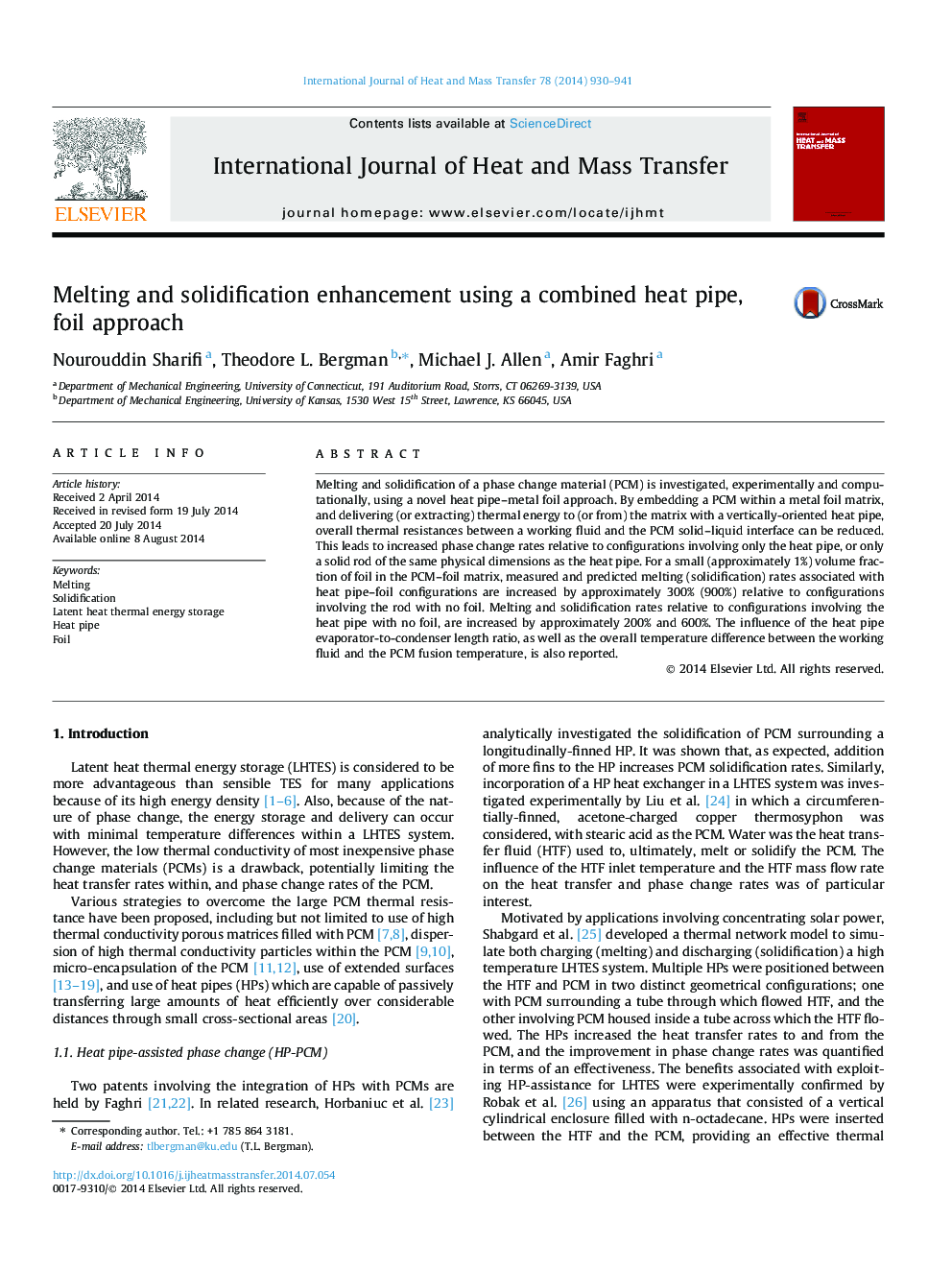| Article ID | Journal | Published Year | Pages | File Type |
|---|---|---|---|---|
| 657757 | International Journal of Heat and Mass Transfer | 2014 | 12 Pages |
Melting and solidification of a phase change material (PCM) is investigated, experimentally and computationally, using a novel heat pipe–metal foil approach. By embedding a PCM within a metal foil matrix, and delivering (or extracting) thermal energy to (or from) the matrix with a vertically-oriented heat pipe, overall thermal resistances between a working fluid and the PCM solid–liquid interface can be reduced. This leads to increased phase change rates relative to configurations involving only the heat pipe, or only a solid rod of the same physical dimensions as the heat pipe. For a small (approximately 1%) volume fraction of foil in the PCM–foil matrix, measured and predicted melting (solidification) rates associated with heat pipe–foil configurations are increased by approximately 300% (900%) relative to configurations involving the rod with no foil. Melting and solidification rates relative to configurations involving the heat pipe with no foil, are increased by approximately 200% and 600%. The influence of the heat pipe evaporator-to-condenser length ratio, as well as the overall temperature difference between the working fluid and the PCM fusion temperature, is also reported.
